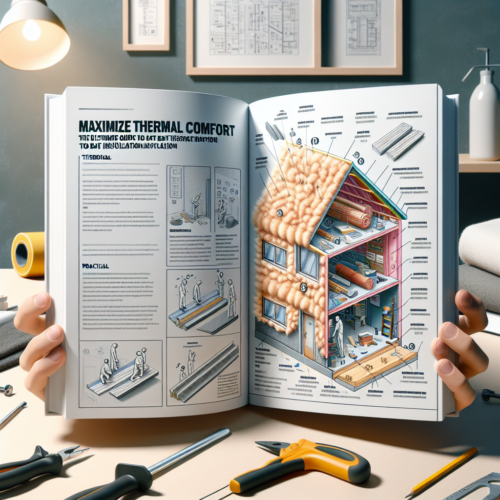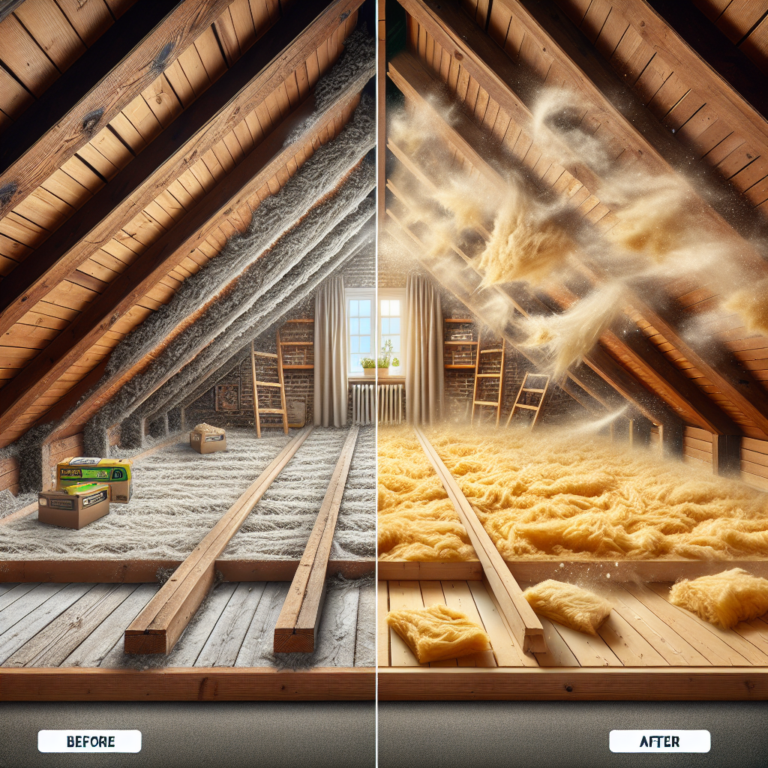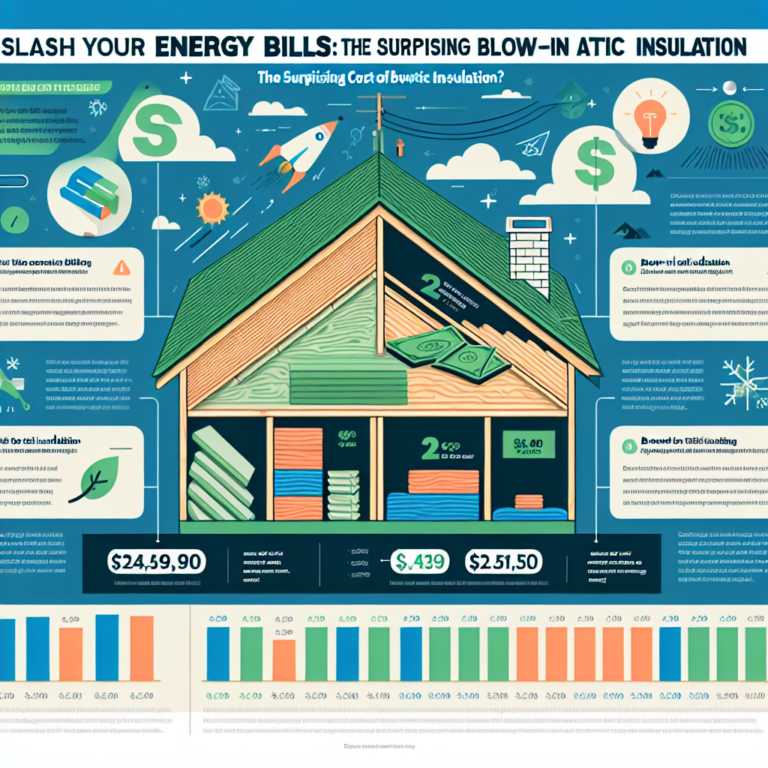-
Table of Contents
“Efficiently insulate your walls with cellulose blown in insulation – the eco-friendly choice for a comfortable home.”
Introduction
Cellulose blown in wall insulation is a type of insulation material that is used to fill the empty spaces within the walls of a building. It is made from recycled paper and treated with fire retardants to make it safe for use in homes and buildings. This type of insulation is becoming increasingly popular due to its eco-friendly nature and its ability to effectively reduce energy costs. In this insulation method, the cellulose fibers are blown into the walls using specialized equipment, creating a dense layer that helps to keep the interior of the building warm in the winter and cool in the summer. In this introduction, we will explore the benefits and process of cellulose blown in wall insulation.
Benefits of Cellulose Blown-In Wall Insulation
Cellulose blown-in wall insulation is a type of insulation that is gaining popularity among homeowners and builders alike. Made from recycled paper and treated with fire-retardant chemicals, this insulation material is blown into walls, attics, and other spaces to provide a barrier against heat loss and gain. In this article, we will explore the benefits of cellulose blown-in wall insulation and why it is a smart choice for your home.
One of the main benefits of cellulose blown-in wall insulation is its high R-value. R-value is a measure of an insulation material’s ability to resist heat flow, and the higher the R-value, the better the insulation. Cellulose blown-in wall insulation has an R-value of 3.6-3.8 per inch, which is higher than other commonly used insulation materials such as fiberglass and foam. This means that cellulose insulation can effectively reduce heat transfer, keeping your home warm in the winter and cool in the summer.
Another advantage of cellulose blown-in wall insulation is its ability to fill gaps and voids. Unlike traditional insulation materials, which are cut to fit and can leave small spaces for air to pass through, cellulose insulation is blown into walls using specialized equipment. This allows it to fill even the smallest gaps and voids, creating a more airtight seal and reducing the potential for drafts and air leaks. This not only improves the overall energy efficiency of your home but also helps to reduce noise transfer from outside.
Cellulose blown-in wall insulation is also a more environmentally friendly option compared to other insulation materials. As mentioned earlier, it is made from recycled paper, which means it is a sustainable and renewable resource. Additionally, the production process for cellulose insulation requires less energy and produces fewer emissions compared to other insulation materials. This makes it a greener choice for those looking to reduce their carbon footprint and make more eco-friendly choices for their home.
One of the lesser-known benefits of cellulose blown-in wall insulation is its ability to resist mold and pests. The chemicals used to treat the recycled paper in cellulose insulation make it resistant to mold growth, which can be a common problem in homes with traditional insulation. Additionally, the dense and compact nature of cellulose insulation makes it difficult for pests to burrow through, reducing the risk of infestations. This not only helps to protect your home but also promotes a healthier living environment for you and your family.
Another advantage of cellulose blown-in wall insulation is its cost-effectiveness. While the initial cost of installation may be slightly higher than other insulation materials, the long-term savings make it a worthwhile investment. The high R-value and airtight seal of cellulose insulation can significantly reduce your energy bills, saving you money in the long run. Additionally, its durability and resistance to mold and pests mean that you will not have to replace or repair it as frequently as other insulation materials, further reducing your overall costs.
In conclusion, cellulose blown-in wall insulation offers numerous benefits for homeowners. From its high R-value and ability to fill gaps and voids to its eco-friendliness and resistance to mold and pests, it is a smart choice for those looking to improve the energy efficiency and comfort of their home. While the initial cost may be slightly higher, the long-term savings and other advantages make it a worthwhile investment. Consider cellulose blown-in wall insulation for your next home insulation project and experience the benefits for yourself.
Cost Comparison: Cellulose Blown-In vs. Other Types of Insulation

Insulation is an essential component of any building, whether it is a residential or commercial structure. It helps to regulate the temperature inside the building, keeping it warm in the winter and cool in the summer. With the rising cost of energy, having proper insulation is crucial in reducing energy consumption and saving money on utility bills. There are various types of insulation available in the market, and one of the most popular options is cellulose blown-in wall insulation.
Cellulose blown-in insulation is made from recycled paper, primarily newspapers, and treated with fire-retardant chemicals. It is a loose-fill insulation that is blown into walls, attics, and other cavities using specialized equipment. This type of insulation has gained popularity in recent years due to its eco-friendliness and cost-effectiveness. However, how does it compare to other types of insulation in terms of cost? Let’s take a closer look.
Fiberglass insulation is one of the most commonly used types of insulation. It is made from glass fibers and comes in batts or rolls. Fiberglass insulation is relatively inexpensive, with an average cost of $0.64 per square foot. However, it requires professional installation, which can add to the overall cost. On the other hand, cellulose blown-in insulation can be installed by homeowners themselves, making it a more cost-effective option. The average cost of cellulose blown-in insulation is $0.70 per square foot, which is slightly higher than fiberglass. However, when factoring in the cost of professional installation for fiberglass, cellulose blown-in insulation may end up being the more affordable option.
Another popular type of insulation is spray foam. It is made from a combination of chemicals and expands to fill the space it is sprayed into. Spray foam insulation is known for its high R-value, which measures the insulation’s ability to resist heat flow. However, it comes at a higher cost, with an average of $1.50 per square foot. Additionally, spray foam insulation requires professional installation, which can further increase the cost. In comparison, cellulose blown-in insulation has an average R-value of 3.5 per inch, making it a cost-effective option with a similar R-value to spray foam. The cost of professional installation for cellulose blown-in insulation is also lower, making it a more budget-friendly choice.
One of the significant advantages of cellulose blown-in insulation is its ability to fill small gaps and crevices, providing better coverage and reducing air leakage. This feature makes it a more efficient insulator compared to other types of insulation. Fiberglass insulation, for example, can leave gaps and spaces, reducing its effectiveness. This means that even though the initial cost of cellulose blown-in insulation may be slightly higher, it can save money in the long run by reducing energy consumption and lowering utility bills.
In terms of durability, cellulose blown-in insulation is known to have a longer lifespan compared to other types of insulation. It does not settle or compress over time, ensuring that it maintains its insulating properties for many years. Fiberglass insulation, on the other hand, can settle and lose its effectiveness over time, requiring replacement or additional insulation to be added. This can add to the overall cost in the long run.
In conclusion, when comparing the cost of cellulose blown-in insulation to other types of insulation, it may seem slightly higher at first. However, when considering factors such as professional installation, efficiency, and durability, it becomes a more cost-effective option. Additionally, with its eco-friendly properties and ability to reduce energy consumption, cellulose blown-in insulation is a wise investment for any building.
Factors Affecting the Price of Blowing Insulation in Attics
Cellulose blown in wall insulation is a popular choice for homeowners looking to improve the energy efficiency of their homes. This type of insulation is made from recycled paper and is blown into walls, attics, and other spaces using specialized equipment. It is known for its effectiveness in reducing energy costs and improving the overall comfort of a home. However, one factor that often deters homeowners from choosing this type of insulation is its price. In this article, we will explore the various factors that can affect the price of blowing insulation in attics.
The first and most obvious factor that affects the price of blowing insulation in attics is the size of the space that needs to be insulated. The larger the space, the more insulation material will be required, resulting in a higher cost. Additionally, the complexity of the space can also impact the price. For example, if the attic has many corners, angles, or obstacles, it will require more time and effort to properly insulate, thus increasing the cost.
Another factor that can affect the price of blowing insulation in attics is the type of insulation material used. While cellulose insulation is generally more affordable than other types such as fiberglass or spray foam, there are different grades and qualities of cellulose insulation that can impact the price. Higher quality cellulose insulation, which may have better thermal resistance and fire resistance, will typically cost more than lower quality options.
The location of the attic can also play a role in the price of blowing insulation. If the attic is easily accessible and does not require any special equipment or safety measures, the cost will be lower. However, if the attic is difficult to access or requires special equipment such as scaffolding or a lift, the cost will increase. Additionally, if the attic is located in a high-cost area, such as a city, the price of labor and materials may also be higher.
The condition of the attic can also affect the price of blowing insulation. If the attic has existing insulation that needs to be removed before the new insulation can be installed, this will add to the cost. Similarly, if the attic has any damage or repairs that need to be addressed before insulation can be installed, this will also increase the price. It is important to have a professional assess the condition of the attic before getting a quote for blowing insulation to ensure that all necessary factors are taken into account.
The time of year can also impact the price of blowing insulation in attics. During peak seasons, such as the summer when many homeowners are looking to improve their home’s energy efficiency, the demand for insulation services increases, and so does the price. On the other hand, during slower seasons, such as the winter, contractors may offer discounts or promotions to attract more business.
Lastly, the experience and expertise of the contractor can also affect the price of blowing insulation in attics. A more experienced and reputable contractor may charge a higher price for their services, but this can also ensure a higher quality installation. It is important to do research and get quotes from multiple contractors to find the best balance between price and quality.
In conclusion, there are several factors that can affect the price of blowing insulation in attics. These include the size and complexity of the space, the type and quality of insulation material, the location and condition of the attic, the time of year, and the experience of the contractor. It is important for homeowners to consider these factors and do their research to find the best option for their budget and needs. Ultimately, investing in proper insulation can lead to long-term savings on energy costs and improve the overall comfort of a home.
Q&A
1) What is cellulose blown in wall insulation?
Cellulose blown in wall insulation is a type of insulation material made from recycled paper fibers that is blown into wall cavities to provide thermal and sound insulation.
2) How does cellulose blown in wall insulation compare to other types of insulation?
Cellulose blown in wall insulation has a higher R-value (a measure of thermal resistance) compared to other types of insulation such as fiberglass or foam. It is also more environmentally friendly as it is made from recycled materials.
3) What are the benefits of using cellulose blown in wall insulation?
Some benefits of using cellulose blown in wall insulation include improved energy efficiency, reduced noise transmission, and fire resistance. It can also help prevent air leakage and moisture buildup in walls. Additionally, it is a cost-effective and eco-friendly option for insulation.
Conclusion
In conclusion, cellulose blown in wall insulation is a highly effective and environmentally friendly option for insulating walls. It is made from recycled materials and provides excellent thermal and sound insulation properties. It is also easy to install and can help reduce energy costs. However, it is important to hire a professional to properly install the insulation to ensure maximum effectiveness. Overall, cellulose blown in wall insulation is a great choice for homeowners looking to improve the energy efficiency and comfort of their homes.














